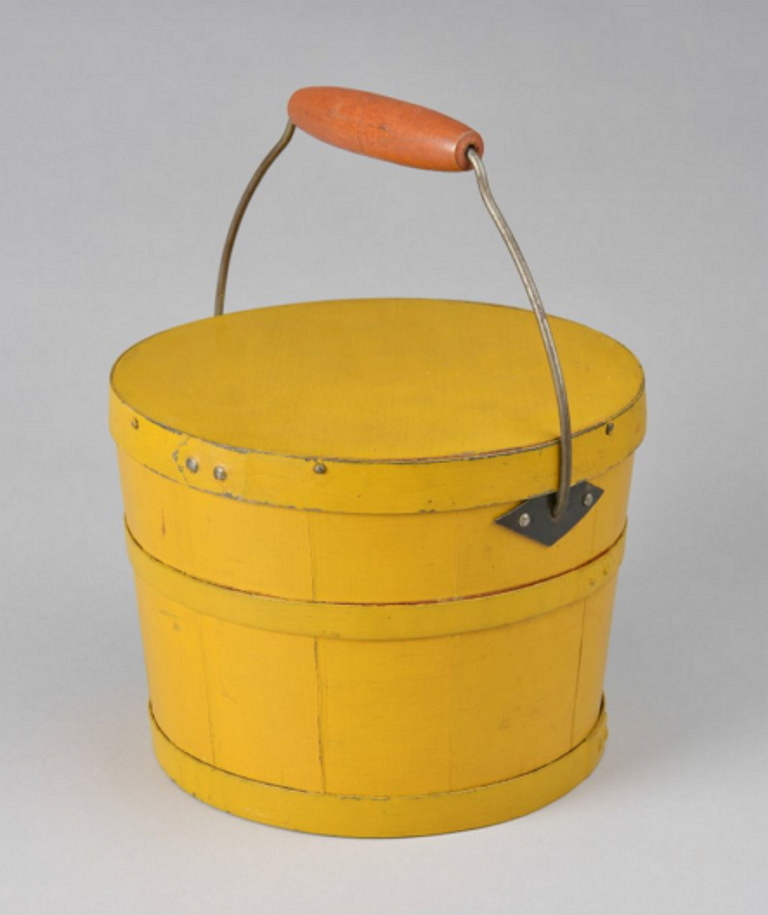Chair, Side
Curly birch and bird's eye maple chair with pewter tilters, Second Family, Mount Lebanon, NY
ca. 1850
Description
Posts are lathe-turned curly birch; stretchers and back slats are bird's-eye maple; seat is finely caned. Chair is equipped with pewter tilters and tilter sockets. Transition pommels.
Notes
Button joint tilts are frequently encountered on the rear posts of chairs produced at Mount Lebanon or Canterbury in the 19th century. Normally made of wood, the button joint tilts were also made with pewter "buttons" and brass "boots". The button joint tilts on this chair are extremely rare in that they are made entirely of pewter. George O'Donnell (b. 1822) of Mount Lebanon patented metal button joint tilts in 1852, although many chairs with button joint tilts date from earlier in the nineteenth century. It remains uncertain why the Shakers built button joint tilts into their chairs, but one popular theory is that the Shakers wanted to prevent the marring of the floor caused by leaning back in the chairs. The Shakers may have initially developed button joint tilts as a feature to make their chairs more saleable to the world. It is known that wooden button joint tilts were installed on chairs long before the 1852 patent for metal tilt joints. Wooden joints often split at the socket, and these chairs were then useless unless the legs were shortened or the chair was converted into a rocking chair. The Shakers may have developed metal button joint tilts in response to the tendency of the wooden ones to split. We know that the Shakers ceased to produce chairs with tilt joints shortly after the 1852 patent, possibly discovering that the metal joints were too expensive to produce. The tiger-maple frame and the cane seat, as opposed to woven tape, are other unusual features of this chair.
Blog post on pewter chair tilters: https://shakerml.wordpress.com/2017/05/24/a-new-and-improved-mode-of-preventing-the-wear-and-tear-of-carpets-and-the-marring-of-floors/
New York Mount Lebanon Second Family














